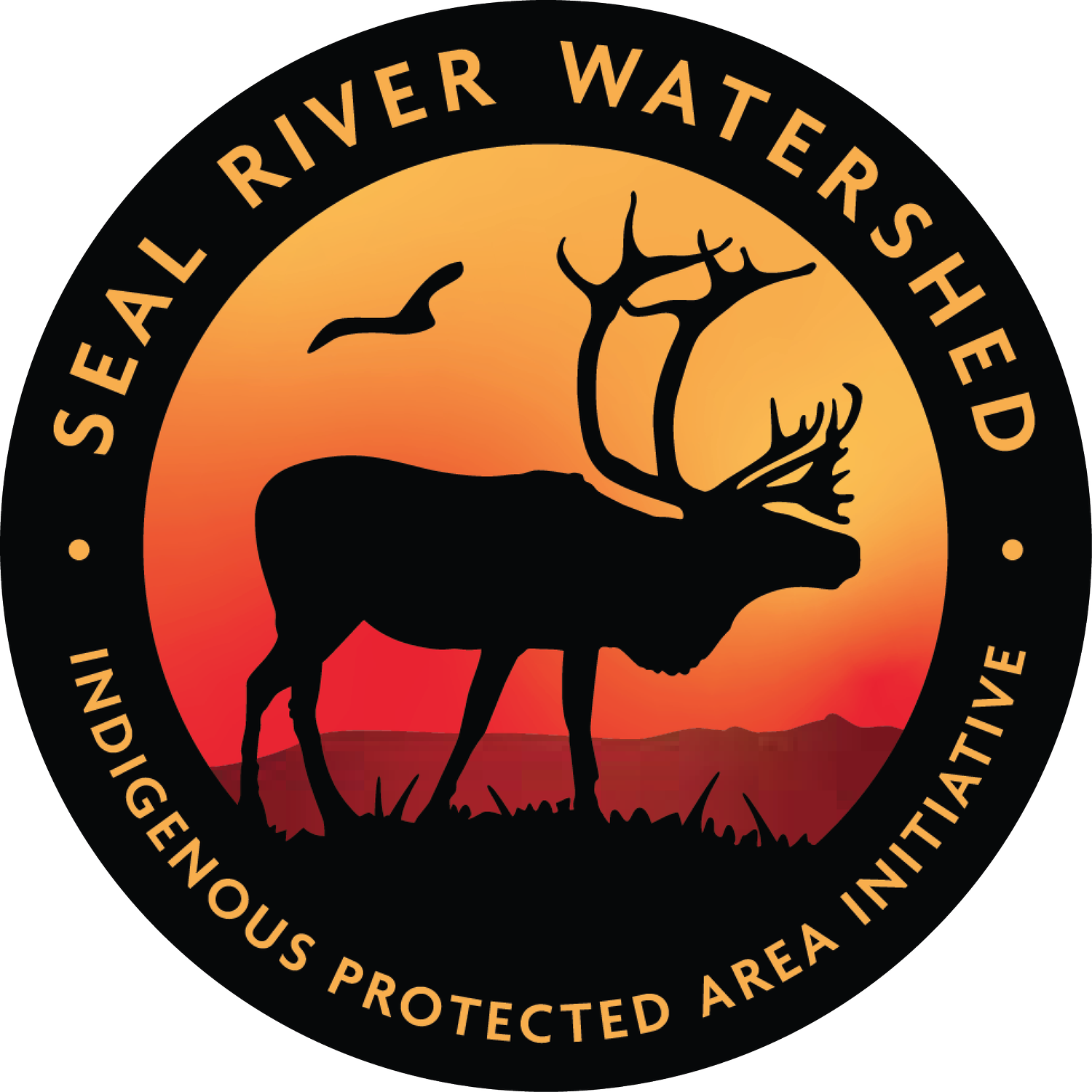Peat, Patience and Partnership – A Tale of Northern Fieldwork
Russell Turner, Wapusk National Park ecosystem scientist and Calvin Clipping, Land Guardian from Tadoule Lake (Sayisi Dene First Nation), drilling for peat samples.
The Seal River Watershed Alliance works with many partners in the region. Here is a blog post from Wapusk National Park about a research project that SRWA Land Guardians contributed to.
When the going gets tough, the tough bundle up and head to the subarctic. But why would anyone willingly brave -40 conditions for winter fieldwork? The thirst for knowledge and the pursuit of collaboration, of course!
In late March, a small contingent of researchers spent a frigid day in the elements to collect frozen peat samples. The group consisted of Resource Conservation staff from Wapusk National Park, staff from the Office of the Chief Ecosystem Scientist (OCES), a post-doctoral researcher from Université du Québec à Montréal (UQAM) and Land Guardians from the Seal River Watershed Alliance. Despite meticulous planning, the team was challenged to reach Wapusk National Park for several days.
“You can’t do fieldwork in the north without logistical challenges,” offers Churchill, Manitoba-based ecosystem scientist Russell Turner.
As time with researchers and Land Guardians was limited, a site at nearby Twin Lakes, just outside the park, was chosen. The new location, accessed by snowmobiles, provided the perfect platform to dig snow pits and learn proper drilling procedure. Once familiar with the procedure, team members took turns collecting frozen peat cores.
Patience and the ability to pivot are the name of the travel game in the north. While distances appear to be “close,” hopping in the car is rarely an option.
“There are no roads, no trails and no easy access to the park,” admits Russell. “We often find people down south don’t understand why we have to use other modes of transportation like helicopters and snowmobiles.”
Alison Cassidy, ecosystem scientist with the Climate and Conservation Science team (CliCS) says the local travel knowledge provided by Wapusk Field Unit staff was a “game changer.”
“We were able to access a study location and collect samples that can’t be retrieved in the summer as the soil is too wet,” Alison explains. “Winter travel allowed us to sample important locations that were previously missing from our work. Seeing the area snow-covered allowed us to better understand the ecosystems we usually only see during the growing season.”
Alison Cassidy, CliCS ecologist and Sadie Dumas from South Indian Lake (O-Pipon-Na-Piwin Cree Nation) take a closer look at a core sample taken from the field.
Some of the extracted cores were packaged and sent to the laboratory at UQAM for lab analyses. Remaining samples were taken to Parks Canada’s Churchill office to provide a rare opportunity for the collection team, as well as a handful of Visitor Experience and other Resource Conservation staff from Wapusk National Park to see what usually lies beneath the surface.
“We were able to explore the different layers of the peat cores,” adds Alison. “Most of the time this is done in the lab, so this was a nice change. We were able to identify wetland plants in the deeper layers of the peat and experiment with the water retention of mosses. Tiina Kolari, a postdoc from UQAM, shared details on her work identifying macrofossils in the lab, which paid off when trying to identify tiny plant fragments in our example peat cores.”
This research is one of many ways staff at Wapusk National Park and OCES collaborate with Indigenous partners, including Seal River Watershed Alliance Land Guardians.
The Seal River Watershed is the ancestral territory of many Indigenous Nations and communities, including, Barren Lands First Nation, Northlands Dene Nation, O-Pipon-Na-Piwin Cree Nation and Sayisi Dene First Nation.
Land Guardians are community conservation leaders who, through application of their skills, knowledge and experience, help protect one of the planet’s largest ecologically intact watersheds and honour their cultural heritage.
Whether collecting data, touching frozen peat, learning wilderness first-aid in the park or seeing polar bears for the first time, there are countless ways to work together with the Land Guardians.
“These are the experiences they’re asking for, and we’re being creative in how we do that,” says Russell. “It’s about working together. That’s what makes the work so successful and rewarding.”
Did you know that Parks Canada works with the Seal River Watershed Alliance on other initiatives?
In March 2025, Parks Canada, along with the Seal River Watershed Alliance and the Government of Manitoba, completed the feasibility assessment for the establishment of an Indigenous Protected and Conserved Area and possible national park reserve in the Seal River Watershed. The focus of the feasibility assessment stage was to understand the issues and concerns of all interested parties and to identify opportunities and challenges. This was done through an information gathering process that incorporated Traditional Knowledge, science and feedback from public consultations. In the end, we determined that establishing a protected area in the region is feasible!
The Seal River Watershed in northern Manitoba covers around 50,000 km2. This landscape is one of the world's largest ecologically intact watersheds and is home to at least 25 known species at risk within the region. This includes wolverines, polar bears, grizzly bears, barren-ground caribou, and olive-sided flycatchers. A population of harbour seals can be found as far as 200 km inland from the mouth of the Seal River, giving the river its name.


